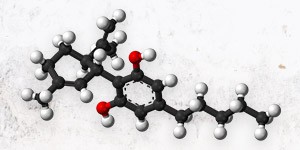By Genester Wilson-King

Dr. Genester Wilson-King, MD, is a Board-Certified obstetrician and gynecologist and Fellow of the American College of OB/Gyn with over 25 years of clinical experience providing compassionate, individualized, and research-driven care to patients throughout Florida. After years of working as a full-service OB/GYN in established institutions such as Lawnwood Regional Medical Center and Florida Hospital Waterman, she founded Victory Rejuvenation Center (VRC), a private holistic and preventive medicine practice that provides life-transforming management modalities and customized medicines prescribed to improve and advance the health of men and women. As the Medical Director of VRC, she channels her expertise in plant- based medicine, integrated health, nutrition and supplement use, exercise, cannabis education and hormone balancing to provide services that help her patients age gracefully and achieve holistic well-being.
Dr. Wilson-King is also an advocate, speaker, clinician and educator for cannabis and hormone/wellness therapy. She presents on Cannabis use in Obstetrics and Gynecology, hormone therapy for PMS, Perimenopause, Menopause and Postmenopause and is nationally recognized.
Dr. Wilson-King is a Fellow of the American College of Obstetrics and Gynecologists, and a Diplomate of the American Board of Obstetrics and Gynecology. Dr. Wilson-King completed her internship and residency at Thomas Jefferson University Hospital and has degrees from Swarthmore College and Thomas Jefferson Medical College.
Dr. Wilson-King treats people from the perspective that we are a spirit with a soul held within a body. In order to achieve health and wellness, you must nourish and nurture all three.
Endometriosis is an issue affecting 10-15% of women of reproductive age, but it is commonly misdiagnosed because test results often come back normal. Endometriosis occurs when tissue normally found inside of the uterus begins growing outside of it. The tissue responds to the hormonal changes throughout the menstrual cycle the same as it would if it were inside the uterus. This causes pain and is complicated by chronic inflammatory reactions. The reason why endometriosis occurs is still relatively unknown.
Endometriosis typically affects those from 30-45 years of age. Seventy percent of women with endometriosis experience dysmenorrhea (painful menstruation).1 However, the pain is not limited to the menstrual cycle. Chronic pain in the pelvis, low back, and abdomen, and pain during sex are common symptoms. Endometriosis is a benign disease, meaning that it is not cancerous. But it is invasive. It can spread throughout the pelvis including the fallopian tubes, the ovaries, and the wall of the uterus. It has even been found in the lungs or coming out of the belly button.1
A fascinating and recurring finding is that the degree of pain is not related to the severity of the endometriosis. In other words, a woman can be in severe pain while having very few endometrial implants during an examination. In my practice, I have done surgery on women for another reason (not related to endometriosis or pelvic pain) and found their pelvis full of endometriosis.
Endometriosis significantly affects a patient's social and economic participation and their physiological, mental, and psychological health. Many patients are on antidepressants and antianxiety or antipsychotic medications. It also significantly affects the families, partners, and carers of those with the condition.
Diagnosis for endometriosis is often delayed because patients' clinical exams generally come back normal. Symptoms of endometriosis often overlap with other conditions, for example, irritable bowel syndrome and pelvic inflammatory disease. A definitive diagnosis is made via pelvic laparoscopy with subsequent histological confirmation. Due to the lack of definitive findings, these women can become depressed and have severe anxiety. Hence, the common diagnosis of mental health illnesses for those with endometriosis.1,2
Many women with endometriosis are asymptomatic and are only diagnosed when they present for fertility evaluations. Approximately 40-60% of patients with endometriosis have fertility issues.2,3 Family history seems to increase the risk of endometriosis for female relatives, especially sisters and mothers, but also can affect cousins and aunts. 4,5,6
There is no known "cure" for endometriosis. The mainstay of treatment is management of the symptoms, especially the pain. Current management strategies include surgery. Medical management includes hormonal manipulation and/or pain medication. These medications may help but are temporary, are associated with a high rate of recurrence, and oftentimes adverse effects. Surgical treatments have the same issues as medications. They are inefficient and temporary.
The Role of Cannabis in Endometriosis Treatment
A study done in Australia in November 2019 found 12.5% of women with endometriosis use cannabis to relieve pain and many other symptoms. Participants rated cannabis as the "most effective way to self-manage" their endometriosis related symptoms. 7
Endometriosis is considered to be a Clinical Endocannabinoid Deficiency (CED) condition. The theory of clinical endocannabinoid deficiency was first proposed by Dr. Ethan Russo. 8,9 It suggests that in some cases the body doesn't produce enough endocannabinoids or receptors for the endocannabinoid system to function properly. The endocannabinoid system becomes dysfunctional due to the lack of endocannabinoids. When this happens, the body becomes out of balance and disease can arise. There are four tenets of a CED condition:
- An increased sensitivity to pain (hyperalgesia)
- All must be diagnosed by a process of exclusion, meaning a medical condition is declared when the presence of a disease cannot be concluded with absolute confidence from medical history, examination, or testing.6,7
- All are correlated with a higher likelihood of anxiety and/or depression and
- They often overlap, with patients presenting with some combination of the three quite often.8,9
When examining endometriosis with respect to the four tenets of CED:
- Patients experience hyperalgesia particularly after long periods of time without a diagnosis. Also, the fact that small implants cause a tremendous amount of pain.
- Endometriosis is a diagnosis of exclusion unless a laparoscopy (the gold standard) is performed. There are no serum markers or definitive imaging (ultrasound, CT scan, MRI) findings (as of yet) that can detect endometriosis.
- Many endometriosis patients suffer from mental health illnesses. This is due to frustration from the lack of a diagnosis, knowing the pain is real and healthcare providers "not believing" them because they cannot "find anything wrong".
- Studies have shown that endometriosis overlaps with other CEDs such as Irritable Bowel Syndrome. 10
Cannabis does many things in the body that make it helpful in the management of the symptoms of endometriosis. Below are a few studies that speak to the theory of endometriosis as a clinical endocannabinoid deficiency condition.
- GPR18 is a receptor to which neurotransmitters in the body that are stored in fat like to bind. Cannabinoids also bind to this receptor. A study in 2010 found that stimulation of GPR18 increases cellular migration, which is a key factor in the spread of endometriosis outside of the uterus.11 In 2011, Russo found that CBD prevents the actions of GPR18 and, thus, should inhibit the spread of endometriosis. 12
- The female reproductive tract has the second highest number of cannabinoid receptors. The brain has the highest. Women who have endometriosis have been found to have lower levels of CB1 receptors in the tissue lining the uterine cavity. This reduction (clinical endocannabinoid deficiency) can lead to growth and spread of endometriosis and worsening of pain symptoms. 13
- A 2010 study published in Reproductive Sciences did endometrial biopsies in women with endometriosis and chronic pelvic pain. They found significant TRPV1 reactivity in these patients.13 TRP stands for transient receptor potential "tunnels" or "channels" which are in the membranes of many cells. The channels allow calcium, sodium and magnesium ions into the cell. The TRPV channel ("V" stands for vanilloid) is named because chemicals from vanilla can activate some of these specific channels. 14,15
TRPV1 channel is important for the detection of various types of pain. It is also known as the "capsaicin receptor" based on the ability for an active component of hot peppers to bind and stimulate it. CBD stimulates and desensitizes TRPV1 and therefore should decrease pain.16 CBD is also an agonist at TRPV1, likely a mechanism of pain-relief and anti-inflammatory effects.17 - A research team from Spain used mice to create a scenario of endometriosis. The 2020 study showed that THC decreased pelvic pain and lessened cognitive impairments but did not impact "anxious behavior". This may be because they used single molecule THC which usually does not help with anxiety. The study was done with THC only.18
Case Study
A 34-year-old female was diagnosed with endometriosis at age 28. She had a long history of chronic pelvic pain, pain with intercourse that it interfered with romantic relationships, anxiety, and difficulty sleeping. She tried the various hormonal treatments and surgery which gave temporary improvement. The side effects of the hormonal treatment made her feel worse.
This patient came to me for a cannabis consultation. She'd been doing research and had joined an endometriosis Facebook support group. She heard about cannabis and had read other patients' experiences with it.
After doing research, she had modified her diet, changed to a healthier lifestyle, and maintained a stable weight. This is important because with more fat cells in your body, the more estrogen there is. More estrogen means more pain since estrogen stimulates endometrial implants.
I shared the literature findings mentioned earlier and other research that shows promise for cannabis in the treatment of endometriosis. I also reviewed some studies on women with endometriosis and what has helped them, as well as what I've seen in my practice. Cannabis use has helped many people I've worked with. This patient was ready to try cannabis to improve her quality of life.
My approach to treating patients is from a holistic perspective. I was not simply treating endometriosis with a woman attached to it. I was treating a woman with a spirit that has a soul that lives in a body. She is dealing with a condition that affects all aspects of her persona. They all must be nurtured on a daily basis for wellness. This patient had already begun her journey by changing her diet and modified her lifestyle which is the first step in the process.
We did a hormone and wellness screening panel. Testing revealed a progesterone deficiency. She began using bioidentical progesterone (as sourced from botanicals as opposed to synthetic sources) as instructed. This provided some relief of symptoms resulting from estrogen dominance such as moodiness, bloating, premenstrual "blues", and improved sleep. This also gave me a chance to discuss daily self-care rituals such as mediation, tai chi, yoga and other similar modalities. I recommended starting with five minutes a day and working up to what was comfortable for her. I encouraged her to get a massage once a month or at whatever frequency she could afford (time and money). This is as important as diet and lifestyle.
Next, a cannabis regimen was instituted. We titrated to the effective dose of a 1:1 CBD/THC or 2:1 CBD/THC tincture taken 15-25mg twice daily depending on symptoms. She also began vaporizing THC flower as needed for breakthrough pain. As she progressed in her therapy, these doses decreased. She is now on 5-10 mg of the same 1:1 CBD/THC or 2:1 CBD/THC tincture once or twice per day as needed. We added a THC dominant (Type 1) or THC: CBD 1:1 (Type 2) vaginal suppository with significant improvement of pelvic pain, particularly during intercourse.
There is not one dose of cannabis that works for everybody. Even the same person may need a different dose at different periods of time. The cannabis "prescription" is intimately tied to one's own endocannabinoid tone and broader physiology and psychology.
In Conclusion
Endometriosis has multifactorial components including inflammation, pain, hormonal dysfunction, poor sleep, and/or anxiety and depression. The capacity of cannabis to act as an anti-inflammatory agent, a muscle-relaxant, mood enhancer, sleep remedy, and a pain reliever at the same time make it ideal for endometriosis.
Further research is needed to pinpoint what role cannabis may have in treating endometriosis and how to best alleviate symptoms of the condition. The fact that endometriosis can be considered a clinical endocannabinoid deficiency (CED) opens the door to opportunities for cannabis to be an effective treatment modality. At least for the time being, some patients are using the plant along with other treatment modalities and find relief.
References:
1. Dutta, D. C., & Konar, H. (2014). DC Dutta's textbook of gynecology. JP Medical Ltd.
2. Bloski, T., & Pierson, R. (2008). Endometriosis and chronic pelvic pain: unraveling the mystery behind this complex condition. Nursing for women's health, 12(5), 382-395.
3. Moini, A., Malekzadeh, F., Amirchaghmaghi, E., Kashfi, F., Akhoond, M. R., Saei, M., & Mirbolok, M. H. (2013). Risk factors associated with endometriosis among infertile Iranian women. Archives of medical science: AMS, 9(3), 506.
4. Hansen, K. A., & Eyster, K. M. (2010). Genetics and genomics of endometriosis. Clinical obstetrics and gynecology, 53(2), 403.
5. Matalliotakis, I. M., Arici, A., Cakmak, H., Goumenou, A. G., Koumantakis, G., & Mahutte, N. G. (2008). Familial aggregation of endometriosis in the Yale Series. Archives of gynecology and obstetrics, 278(6), 507-511.
6. Kashima, K., Ishimaru, T., Okamura, H., Suginami, H., Ikuma, K., Murakami, T., ... & Tanaka, K. (2004). Familial risk among Japanese patients with endometriosis. International Journal of Gynecology & Obstetrics, 84(1), 61-64.
7. Sinclair, J., Smith, C. A., Abbott, J., Chalmers, K. J., Pate, D. W., & Armour, M. (2020). Cannabis use, a self-management strategy among Australian women with endometriosis: results from a national online survey. Journal of Obstetrics and Gynaecology Canada, 42(3), 256-261.
8. Russo, E. B. (2008). Clinical endocannabinoid deficiency (CECD). Neuroendocrinology Letters, 29(2).
9. Russo, E. B. (2016). Clinical endocannabinoid deficiency reconsidered: current research supports the theory in migraine, fibromyalgia, irritable bowel, and other treatment-resistant syndromes. Cannabis and cannabinoid research, 1(1), 154-165.
10. DiVasta, A. D., Zimmerman, L. A., Vitonis, A. F., Fadayomi, A. B., & Missmer, S. A. (2020). Overlap between Irritable Bowel Syndrome Diagnosis and Endometriosis in Adolescents. Clinical Gastroenterology and Hepatology.
11. McHugh, D., Hu, S. S., Rimmerman, N., Juknat, A., Vogel, Z., Walker, J. M., & Bradshaw, H. B. (2010). N-arachidonoyl glycine, an abundant endogenous lipid, potently drives directed cellular migration through GPR18, the putative abnormal cannabidiol receptor. BMC neuroscience, 11(1), 44.
12. Russo, E. B. (2011). Taming THC: potential cannabis synergy and phytocannabinoid‐terpenoid entourage effects. British journal of pharmacology, 163(7), 1344-1364.
13. Rocha, M. G., Silva, J. C. R. E., Ribeiro da Silva, A., Candido Dos Reis, F. J., Nogueira, A. A., & Poli-Neto, O. B. (2011). TRPV1 expression on peritoneal endometriosis foci is associated with chronic pelvic pain. Reproductive Sciences, 18(6), 511-515.
14. Montell, C. (2001). Physiology, phylogeny, and functions of the TRP superfamily of cation channels. Science's STKE, 2001(90), re1-re1.
15. Colbert, H. A., Smith, T. L., & Bargmann, C. I. (1997). OSM-9, a novel protein with structural similarity to channels, is required for olfaction, mechanosensation, and olfactory adaptation inCaenorhabditis elegans. Journal of Neuroscience, 17(21), 8259-8269.
16. Bouaziz, J., Bar On, A., Seidman, D. S., & Soriano, D. (2017). The clinical significance of endocannabinoids in endometriosis pain management. Cannabis and Cannabinoid Research, 2(1), 72-80.
17. Premkumar, L. S., & Sikand, P. (2008). TRPV1: a target for next generation analgesics. Current neuropharmacology, 6(2), 151-163.
18. Escudero-Lara, A., Argerich, J., Cabañero, D., & Maldonado, R. (2020). Disease-modifying effects of natural Δ9-tetrahydrocannabinol in endometriosis-associated pain. Elife, 9, e50356.
Further Reading
Epidemiologic determinants of endometriosis among Egyptian women: a hospital-based case-control study.Mamdouh HM, Mortada MM, Kharboush IF, Abd-Elateef HAJ Egypt Public Health Assoc. 2011; 86(1-2):21-6
Cramer DW, Missmer SA The epidemiology of endometriosis. Ann N Y Acad Sci. 2002 Mar; 955():11-22; discussion 34-6, 396-406.
Alberico, D., Somigliana, E., Bracco, B., Dhouha, D., Roberto, A., Mosconi, P., ... & Vercellini, P. (2018). Potential benefits of pregnancy on endometriosis symptoms. European Journal of Obstetrics & Gynecology and Reproductive Biology, 230, 182-187.


